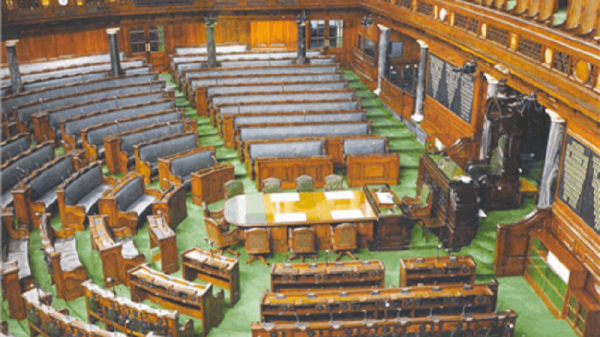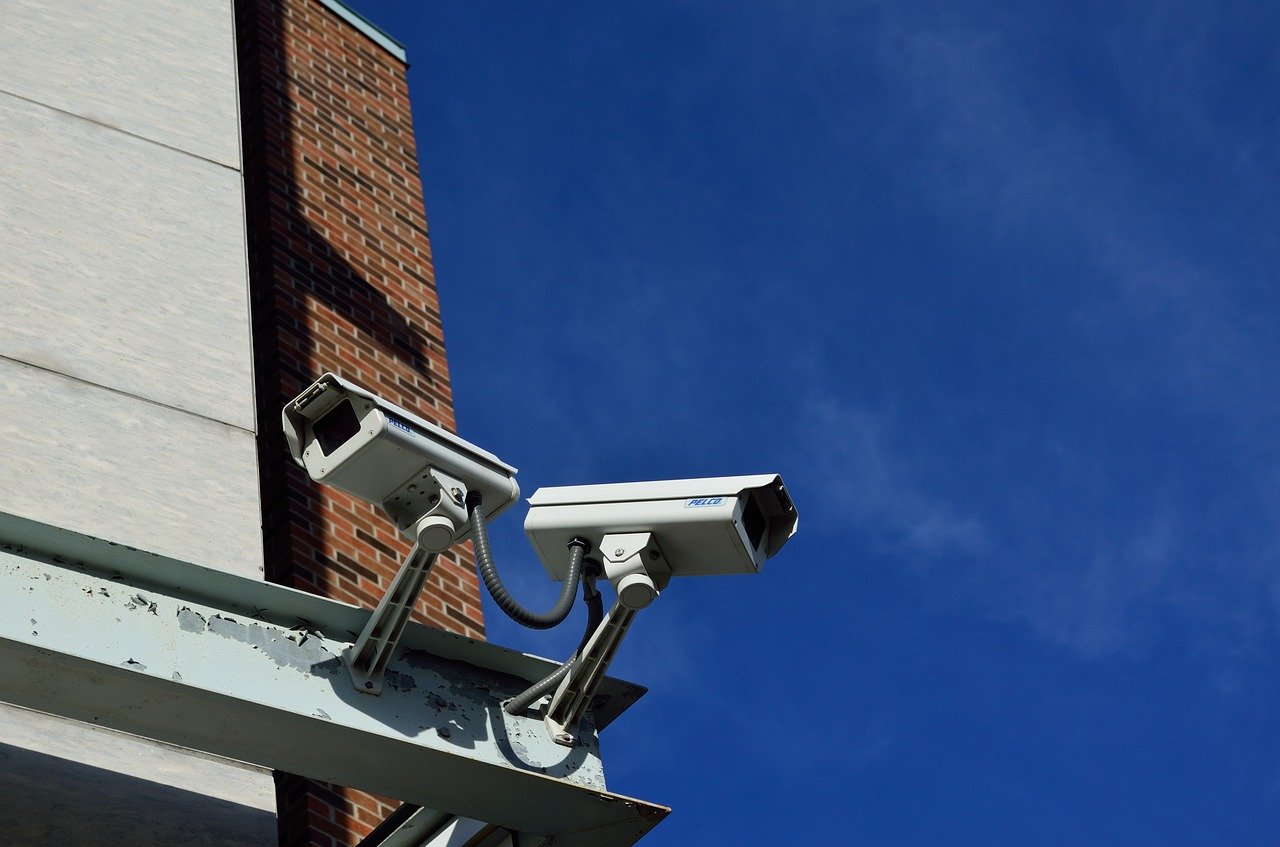According to the police, the CCTV footage will be stored for a year and will be used to keep an eye on the confiscated property, movement of police personnel, among others.
You are reading it here first: In compliance with a Supreme Court order specifically aimed at monitoring human rights violations during custodial interrogations, and to observe the overall workings of a police station in terms of interaction with citizens, the Assam Police will be installing high-resolution IP-based CCTV cameras in 340 police stations across the state in a phased manner.
The Assam Police has floated a tender (a copy of which MediaNama has seen) in this regard for the “Design, Supply, Installation, Commissioning and Support of CCTV System With All Accessories As Per Tender Specifications in All Stations of Assam”. Nearly 6,000 CCTV cameras will be installed at various points in a station including male and female lockups. The tender says that the IP-based surveillance system will “analyse behaviour of police forces with respect to public dealings and bring about preventive and corrective actions as required”.
Why it matters? India has a grim reality of custodial violence. As recently as last week, the Uttarakhand High Court ordered a CBI probe into the custodial death of a 35-year-old prisoner in Haldwani Sub-Jail in the state. The Supreme Court while delivering its judgement in December 2020 had taken similar instances into consideration and had directed, not just police stations across all States and Union Territories, but also central investigation agencies, to install CCTVs on their premises.
The surveillance setup
- High resolution day and night IP dome and bullet camera with inbuilt infrared (IR) and audio at strategic locations inside & outside the police station.
- Video servers for the primary and secondary recording of video and audio feeds
- Video management and video analytics software
- Active and passive network components for connectivity
- Display units for monitoring
- Uninterrupted power supply (UPS) with off-grid solar power system of 3KVA
- Secured connectivity between the police station and the central recording center
- Command and Control Software at the centralised command center
Footage and audio from police stations will be stored for minimum one year
The tender said that the video and audio will be stored on site (at the police stations) for 30 days, thereafter it will be transferred to the centralised command center for storing it for a year. It is important to note that the Supreme Court in its order had recommended that these footages be stored for 18 months. These are the other steps that the Assam Police will take, as mentioned in the tender, to safeguard CCTVs and their footage:
- RAID -5 data protection level at the primary and secondary servers
- Watermarking of video feeds at the office in-charge room
- Generate real-time alerts due to attempts made by “mischievous elements to tamper cameras, distort networking connectivity, stop recording of videos”
- Export video based on date, time of court hearings
- Designated officials of Assam Police to have access to video feeds via “a secured proposed Assam Police Net”
- The central site is to be integrated with a GIS map for each police station
Around 10 CCTVs to be installed in strategic positions at each PS
What does Assam police aim to address with this surveillance system?
As mentioned earlier, one of the aims of this surveillance system is to monitor Assam Police's behaviour while dealing with citizens. But there are other reasons also cited by the police in the tender. They are —
- To monitor and detect any human rights violations during custodial interrogations
- Monitor the behavior of the accused under police custody
- Produce real-time video and audio feed to concerned officials of Assam Police in case of
any event - Monitor the items confiscated and stored at the police stations
- Monitor the entry and exit of police personnel, suspects, and others at the police station
- Conduct forensic audit trials to ensure implementation of the Supreme Court from December 2020
- Alert superior officials on any event of untoward behaviour inside or on the periphery of the police station
What does the Supreme Court order say?
According to the order, CCTV cameras should be installed across a given police station, including the main gate of the police station, all lock-ups, areas outside the lock-up room, all corridors, reception, all verandas/outhouses, inspector’s room, and even outside toilets. The data captured by these cameras should be stored for a period of 18 months, the order said.
Apart from police stations in all States and UTs, CCTV cameras will have to be installed at the offices of the Central Bureau of Investigation (CBI), National Investigation Agency (NIA), Enforcement Directorate (ED), Narcotics Control Bureau (NCB), Department of Revenue Intelligence (DRI), Serious Fraud Investigation Office (SFIO), and any other central agency office which does interrogations, and has the power to arrest people, the apex court said.
“[…] it shall be clearly mentioned therein that a person has a right to complain about human rights violations to the National/State Human Rights Commission, Human Rights Court or the Superintendent of Police or any other authority empowered to take cognizance of an offence. It shall further mention that CCTV footage is preserved for a certain minimum time period, which shall not be less than six months, and the victim has a right to have the same secured in the event of violation of his human rights.” — the Supreme Court in its judgement
Indian govt requested agencies, States to install CCTVs following SC order
Recently, the Ministry of Home Affairs in response to a question in the Lok Sabha said that the Indian government had requested central investigation agencies as well as States and UTs to allocate a part of their budget for installing a CCTV surveillance system.
Minister of State in the Ministry of Home Affairs Nityanand Rai said that following the judgement in December, another hearing was held on April 6, 2021, wherein the Court “directed for allocation of budget to the central agencies within a month from the date of order and for implementation of complete order within a period of six months from the date of allocation of budgets.”
He further informed that on April 13, 2021, central investigation agencies were requested to allocate provisions for CCTVs in their budget. “States/Union Territories are already impleaded in the case for filing status report on installation of CCTV Cameras in Police Stations, directly before the Hon’ble Court. As police is a State subject the information regarding number of police stations having CCTVs is not maintained at the level of Central Government,” Rai said adding the State/UT governments were given an advisory in this regard on August 8.
Telangana police to install 10,330 cameras in 774 police stations
A few months after the Supreme Court order, a Rs 75 crore request for proposal (RFP) was put out on behalf of the Telangana State Police Department by the Telangana State Technology Services (TSTS) for the installation of 10,330 CCTV cameras (both outdoor and indoor) at various places in and around 624 police stations.
Each police station will have a CCTV control room and will be connected to the central command. If necessary, a third-party network service provider can also connect to the network. “The CCTV system should capture the live video and audio stream, store, retrieve, and analyze video images and audio tracks to enable surveillance and monitoring thus increase operational efficiency. The CCTV system should have the video motion detection enabled on all cameras to minimise the storage space when there is no movement in the night at each of the sites,” the RFP said.
As of now, there are already 2,416 CCTVs in about 150 Telangana police stations, according to the RFP.
Read more:
- All police stations must be equipped with CCTV cameras, persons in custody have right to secure CCTV footage: SC
- Hyderabad deploys Artificial Intelligence tools across 2,000 CCTVs to identify mask violators
Have something to add? Subscribe to MediaNama and post your comment























You must be logged in to post a comment Login